Transactional emails differ significantly from email marketing, as the former focuses on critical communications following specific actions, like purchases or account updates, while the latter revolves around promotional content. The importance of deliverability and personalized offers is paramount in transactional emails to ensure a seamless customer experience.
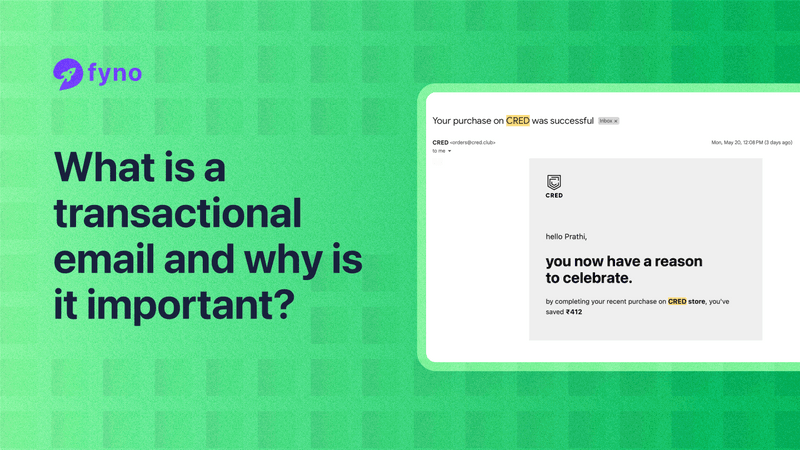
What is a transactional email?
A transactional email is an automated email sent to a user following a specific action they have taken on a website or application. These actions can include making a purchase, resetting a password, or creating an account.
Unlike marketing emails, which are sent to promote products or services, transactional emails provide essential information and confirm that an action was completed successfully. Successful transactional emails play a crucial role in reinforcing brand identity and fostering customer loyalty by offering personalized content that meets customer expectations, thereby cultivating strong customer relationships and a positive brand perception.
Recommended Read: Top transactional email service providers for developers in 2024
Key characteristics of transactional emails
Transactional emails possess several key characteristics:
Triggered by user actions: They are sent in response to a user's action, such as a purchase or password reset.
Personalized content: They contain information specific to the user, like order details or account information.
High open rates: Due to their relevance and timely delivery, transactional emails generally have higher open rates compared to a marketing email.
Compliance with regulations: They must comply with laws like the CAN-SPAM Act, which mandates the inclusion of an unsubscribe link if the email contains any promotional content.
What makes an email transactional?
An c email message qualifies as transactional if its primary purpose is to facilitate or confirm a transaction that the user has initiated.
For instance, an order confirmation email, a password reset email, or a shipping notification email. These emails are vital in building trust and maintaining communication with customers by ensuring they are informed about their actions and the subsequent steps.
Transactional emails must be clear and concise, providing all necessary details to the user without unnecessary promotional content. This clarity helps minimize customer service requests and enhances the overall customer experience.
Types of transactional emails
The various types of transactional emails are listed below.
Order confirmation emails
Shipping notification emails
Delivery confirmation emails
Double opt-in emails
Password reset emails
Legal update emails
Invoice emails
Let's dive deeper into each of them.
Order confirmation emails
Order confirmation emails are sent immediately after a purchase is made. They provide proof of the transaction and offer important details such as order number, order summary, payment information, and shipping address. These emails reassure customers that their order was successfully processed and allow them to keep track of their purchases. Including a link to order details and customer support contact information can further enhance customer satisfaction.
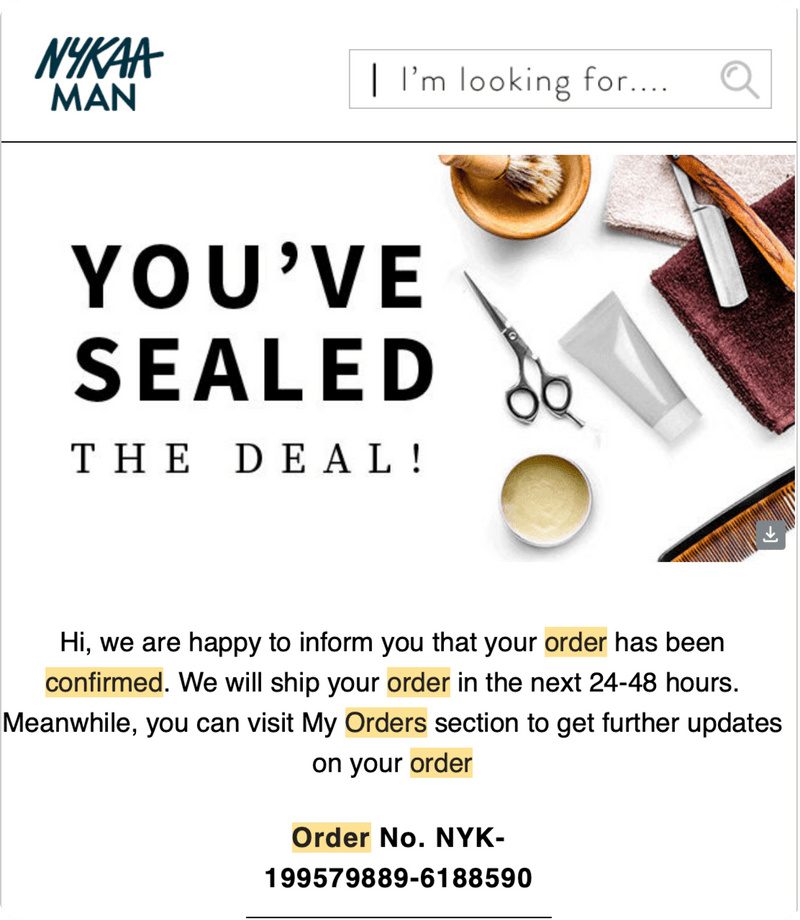
Shipping notification emails
Shipping notification emails inform customers when their order has been shipped. These emails typically include the items shipped, tracking information, and the expected delivery date. Providing timely shipping notifications helps set customer expectations and reduces inquiries about order status, enhancing the overall customer experience.
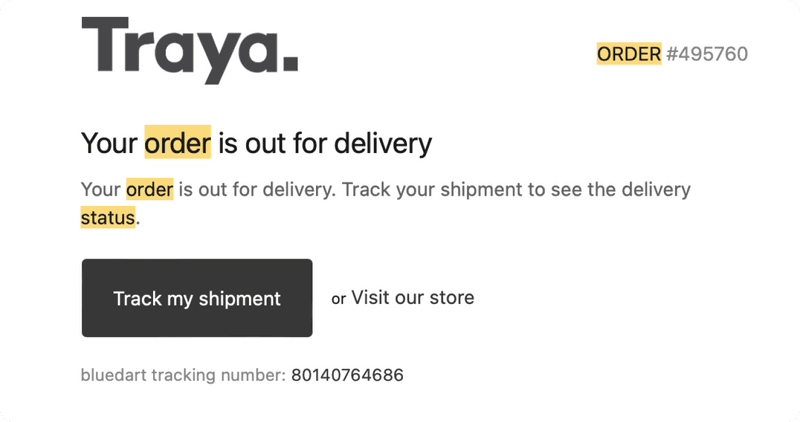
Delivery confirmation emails
Delivery confirmation emails are sent when a customer's order has been delivered. These notifications ensure that customers are aware of their delivery status and can address any issues promptly if the delivery did not go as planned. This type of a confirmation email can help reduce the number of customer service requests regarding delivery problems.

Double opt-in emails
Double opt-in emails are used to confirm a user's subscription to a service or mailing list. After a user signs up, they receive an email with a confirmation link to verify their subscription. This process helps ensure that the subscriber's email address is valid and that they genuinely want to receive communications from your business or contact lists, improving email deliverability and engagement rates.
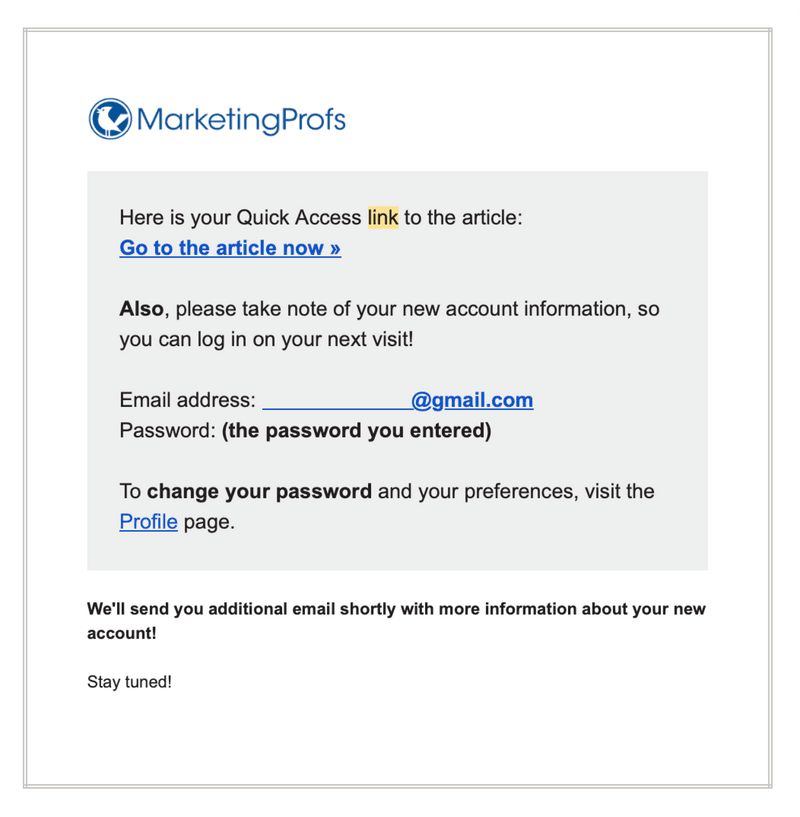
Password reset emails
After a customer receives a password reset request, it's crucial to send a transactional email promptly. These emails are critical for account security, providing a secure link to reset the password. Including clear instructions and a direct link to reset the password can help users regain access to their accounts quickly and with minimal frustration. Ensuring these emails are sent promptly is essential to maintaining a positive user experience.
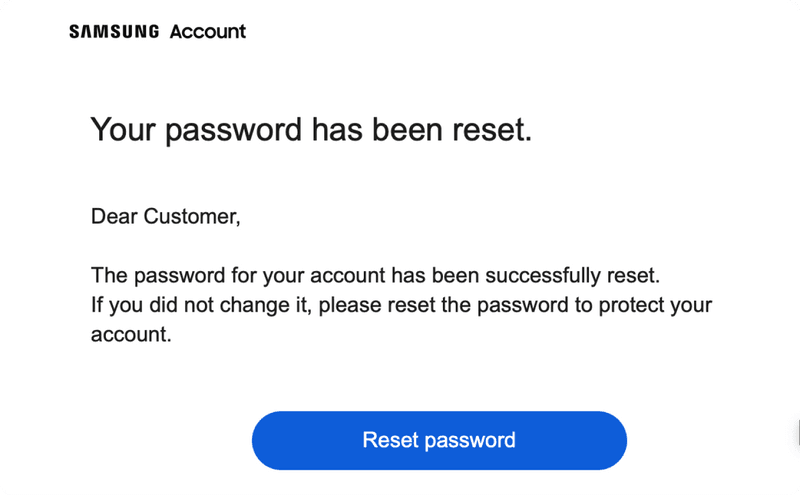
Legal update emails
Legal update emails notify customers about changes to terms of service, privacy policies, or other legal agreements. While these emails typically do not require any action from the recipient, keeping customers informed about such updates helps maintain transparency and trust in your business. Including a link to the updated documents allows customers to review the changes in detail.
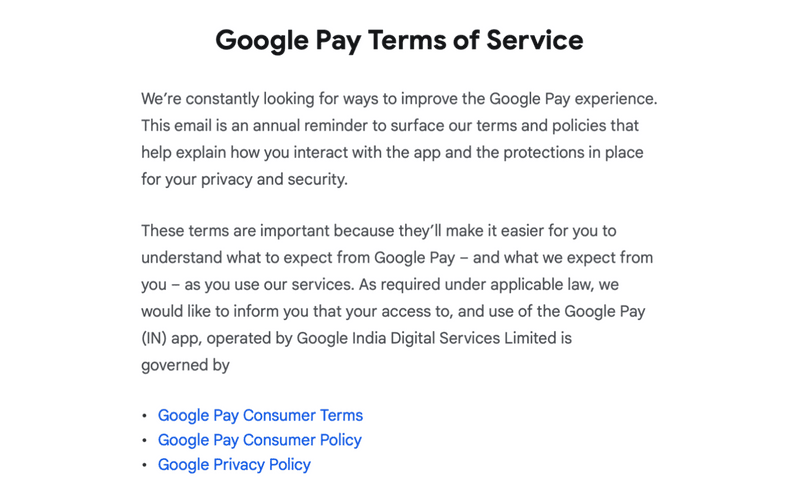
Invoice emails
Invoice emails are sent after a purchase, providing a detailed breakdown of the items purchased and the total cost. These emails often include payment instructions and a link to view the invoice online. Sending timely and clear invoice emails helps ensure that customers have all the necessary information to complete their payments, reducing the likelihood of late payments and improving cash flow

Why transactional emails are crucial for businesses
Transactional emails are a vital component of business communication, ensuring timely and relevant interactions with customers. Unlike marketing emails, which are sent to many recipients at once, transactional emails are sent in response to specific user actions, making them highly personalized and relevant.
Firstly, transactional emails, such as order confirmations, password resets, and shipping notifications, help establish trust. Customers rely on these emails to confirm their actions, such as purchases or account changes, which reassures them that their transactions have been processed successfully. This level of reliability enhances customer trust and satisfaction.
For instance, order confirmation emails typically see open rates of around 70%, compared to the 10-20% open rates of marketing emails. This high engagement is crucial for maintaining strong customer relationships and improving brand recognition.
Secondly, these emails have high open and click-through rates because they contain information the recipient is expecting.
For example, a logistics company might include a special offer for expedited shipping in their shipping confirmation emails, potentially increasing revenue.
Additionally, transactional emails can boost customer engagement and drive additional sales. By including personalized recommendations or relevant promotions within these emails, businesses can subtly encourage further purchases.
Moreover, transactional emails help ensure compliance with regulations such as the CAN-SPAM Act. These laws require clear subject lines, accurate sender information, and an easy-to-find unsubscribe link, ensuring that businesses maintain transparency and build trust with their customers.
The importance of transactional emails for customer engagement
Transactional emails play a significant role in customer engagement by providing a seamless and reassuring customer experience. These emails are not just about delivering information but also about enhancing the overall customer journey.
Banking, Financial Services and Insurance (BFSI)
In the banking sector, password reset emails ensure customers can quickly and securely regain access to their accounts. A well-designed password reset email and process, which includes a clear password reset link, can significantly improve the user experience and reinforce the security of the service provided.
Furthermore, welcome emails sent after account creation in the BFSI sector can set the tone for the whole customer base's relationship with the brand. These emails can include helpful information about using the service, links to customer support, and even special offers to encourage engagement from the customer base from the start.
Logistics
In the logistics industry, shipping confirmation emails keep customers informed about their order status, enhancing the delivery experience. Real-time updates on shipment progress ensure that customers know exactly when to expect their packages, which builds trust and satisfaction.
By leveraging transactional emails effectively, businesses can create opportunities for deeper engagement and stronger customer relationships.
Best practices for transactional emails
Transactional emails are essential as they provide timely and pertinent communication with users. To send effective transactional emails, several best practices should be followed. A few of them are discussed below.
Personalization
Personalize your transactional emails and transactional messages by including the recipient's name and relevant details like their purchase history or account information. This makes the email feel tailored to the individual, enhancing engagement and satisfaction.
Clarity and conciseness
Ensure your emails are clear and concise. Provide the necessary information without overwhelming the reader with too much text. Use bullet points to break down information and make it easy to scan.
Email deliverability
To improve deliverability, use a reliable email service provider (ESP) and a dedicated IP address. Monitor your sender reputation regularly to maintain high deliverability rates. This ensures that important transactional emails reach your recipients promptly.
By following these best practices, you can create effective transactional emails that not only inform but also enhance the customer experience, fostering stronger relationships and loyalty.
Fyno's unique approach to transactional emails
Fyno’s unique approach to transactional emails offers a seamless, developer-friendly solution for managing multi-channel notifications.
Say, if you use Mailchimp Transactional Email, Sendgrid or any other transactional email provider, you can manage all the integrations unified by a single API gateway, with Zapier like capabilities for enhanced automation.
Multi-channel notification system
Fyno provides a robust multi-channel notification system that allows businesses to send notifications through various channels such as emails, SMS, push and in app notifications via a unified API. This simplifies the process of managing and integrating different communication channels, ensuring timely and relevant transactional messages
Optichannel routing
Fyno uses opti-channel routing to determine the best communication channel for each message. This approach maximizes deliverability and ensures messages reach users in the most effective way possible. For example, order confirmations and account creation emails are routed based on user preferences and behaviour patterns, ensuring they are noticed and acted upon quickly.
Template management and automation
Users can create and manage templates for various notifications, such as shipping confirmation emails and password reset emails, using a drag-and-drop editor. This feature helps maintain consistency and efficiency across all communications.
Analytics and insights
Fyno offers comprehensive analytics and insights to help businesses track the performance of their notifications. By providing real-time data on delivery rates, open rates, failures, and other key metrics, Fyno enables companies to optimize their customer communication strategies and improve customer engagement.
Deliverability
Ensuring high deliverability rates is crucial for effective communication. Fyno’s platform is designed to handle high volumes of transactional notifications and emails without delays, making it a reliable choice for businesses that need to maintain constant communication with their customers.
Compliance and regulations
We are designed to meet stringent compliance standards, ensuring that transactional emails adhere to global regulations. Fyno is compliant with GDPR, SOC 1, SOC 2, and ISO standards, providing businesses with the assurance that their communication practices meet high-security and data privacy benchmarks.
Conclusion
Transactional emails are an integral part of effective communication strategies for businesses. They ensure timely delivery of critical information, enhance customer trust, and improve engagement rates. By adhering to regulatory requirements and incorporating best practices, companies can leverage transactional emails to foster stronger customer relationships and streamline their operations.
FAQs
1. What is the difference between transactional and marketing emails?
Transactional emails are sent to facilitate a user-initiated action, like a password reset or order confirmation. Marketing emails are sent to promote products or services and require user consent to receive.
2. Are unsubscribe links required in transactional emails?
Typically, no. However, including an unsubscribe link can build trust and ensure compliance with specific local laws and regulations, like CASL in Canada.
3. How can transactional emails improve customer relationships?
By providing timely, relevant information and maintaining transparency, transactional emails help build trust and keep customers informed about their transactions and account status.
4. What are some examples of transactional emails?
Common examples include order confirmations, shipping notifications, password reset emails, and account creation emails. Each serves a specific purpose in the customer journey.
5. Can transactional emails include marketing content without violating regulations?
Including marketing content in transactional emails is a grey area and must be handled carefully to avoid violating regulations like the CAN-SPAM Act or GDPR.


